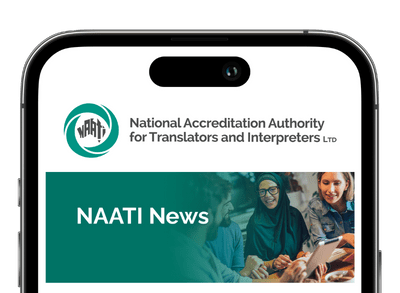Effective communication in health care is critical and interpreters can play a key role, particularly in language discordant consultations, where a patient and a clinician do not share the same language.
Despite the government-funded Free Interpreting Service (FIS)—which makes interpreters available in private specialist consultations, including general practice, at no cost to eligible patients—the level of interpreter engagement remains substandard. Instead, there remains a widespread practice of involving family members and friends to facilitate communication.
Adverse outcomes arising in such situations, such as poor patient satisfaction and experience, are broadly known. What is needed, according to a recent report by the Migrant and Refugee Health Partnership (MRHP), is a cost-benefit analysis of interpreter engagement for language discordant consultations in general practice, especially in Australia, with most such research conducted in the United States and in hospital settings.
Cost-benefit considerations are critical for understanding and addressing the drivers and motivations behind the low uptake of interpreting services in general practice.
Beyond the quality and equity of health care, the benefits are linked to actual financial savings realised from avoided hospital readmissions, more efficient consultations, mitigation of medico-legal risks around duty of care, safe use of medication and appropriate informed consent. Together, these savings can be substantial.
In considering the costs, are there any? In light of the availability of FIS for general practitioners, it would be easy to assume that there are none.
However, according to the report’s findings based on extensive consultations conducted with Australian general practitioners, there are significant disincentives to engaging interpreters in general practice.
A foremost concern is responsibility for the financial costs of interpreter services. Beyond the direct expense of interpreter fees (covered through FIS), related factors contribute to potential financial burdens. For example, general practice appointment structures do not accommodate the prolonged commitment required to conduct an interpreted consultation, representing a drain on practice resources when this extra time is not remunerated.
For this reason, noting that doctors tend to bulk-bill interpreted consultations, every consultation involving an interpreter takes longer and generates less revenue than a language-concordant consultation for equivalent health needs, which can be conducted in less time.
Subsequently, although interpreter engagement can realise cost-savings at the systemic level, for individual practices it may represent a disproportionate financial burden. For example, the MRHP’s collaborator on the report, Inala Primary Care, estimated the costs of its interpreter services use during 2018/19 to total $368,768.
The challenge for the Australian health system lies in addressing the risks of poor communication for language-discordant patients in a way that realises systemic cost-savings and improvements in care without exacerbating the burden on individual general practices, particularly in areas of high linguistic diversity.
The report puts forward a number of recommendations to address this challenge. Of note, the report proposes—and outlines a model for—a Practice Incentives Program (PIP) payment as a feasible and pragmatic mechanism to incentivise interpreter engagement in general practice.
The full report can be accessed here
Written by Gulnara Abbasova, Executive Officer, Migrant and Refugee Health Partnership, and a member of NAATI’s Technical Reference Advisory Committee.
